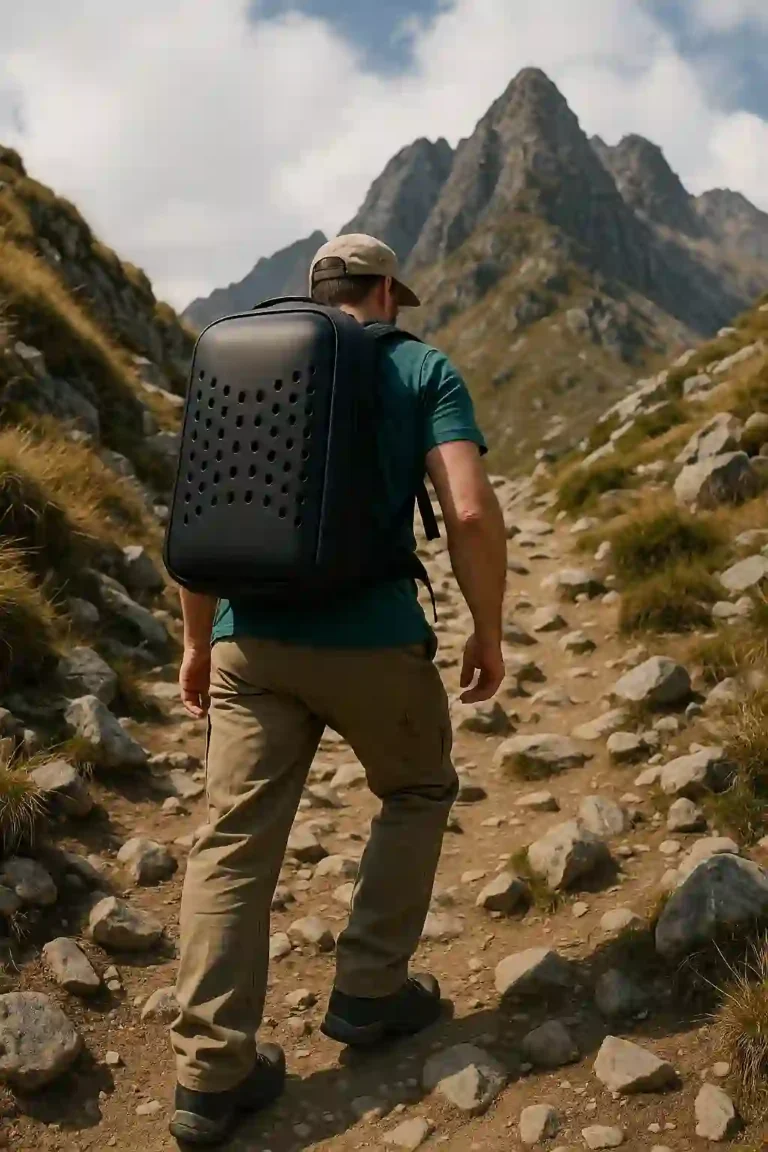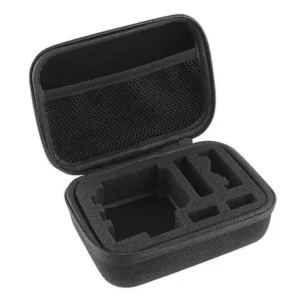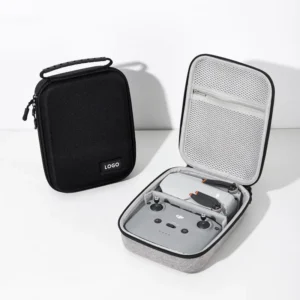EVA Hiking Backpack – Proper Fit and Usage Guide
Mountaineering not only strengthens the body but also nurtures the spirit. As a form of outdoor exercise, it combines aerobic activity with muscular strength and can be tailored to individual fitness levels and endurance. When done properly, hiking poses minimal risk and offers substantial benefits. A well-fitted walk-out backpack can make all the difference in comfort and success. Below is a professional guide for B2B buyers—including outdoor gear wholesalers and e-commerce sellers—on how to properly adjust and carry an EVA hiking backpack for optimal performance.

Backpack Fit Test: Step-by-Step
Always adjust in this recommended order: waist belt → shoulder straps → load-lifter straps → stabilizer straps → sternum strap.
1. Pre-load & loosen all straps
Before putting the backpack on, release all adjustment straps (shoulder, chest, waist, load-lifter) to start from a neutral position. Then load the pack (ideally with 10 kg or so) to simulate actual usage. This helps evaluate how the pack will feel when loaded and whether the strap travel range is sufficient.
2. Secure the waist belt first
After wearing the pack, fasten the hip belt snugly over your iliac crest. A properly positioned waist belt transfers most load to your pelvic bones, relieving strain on the shoulders and spine.
3. Adjust shoulder straps properly
Tighten the shoulder straps gradually so the padding rests snugly on your shoulders. Avoid overtightening. The connection point between shoulder straps and pack should sit about 5–8 cm below the shoulder line. The pack should hug your back firmly but not rock as you move.
4. Fasten the sternum strap
Adjust the chest strap height and tension so it holds the shoulder straps comfortably and prevents lateral bounce. It should not restrict breathing—ideally it crosses mid-chest level.
5. Fine-tune load-lifter and stabilizer straps
Tighten the load-lifter straps (located just above the shoulder straps) to pull the pack upper body closer and shift the center of gravity forward slightly. Tighten stabilizer straps on the waist belt sides to bring the lower pack snugly against the pelvis. Finally, test your range of motion—head tilting, looking upward (especially if wearing a helmet), and breathing comfort—while checking that no straps dig or pinch.
Note: If your backpack features an internal aluminum stay, avoid manual bending at first. With consistent use, the stay will gradually conform to your back curvature organically.
Key Fit & Safety Considerations
• Match strap range to torso length
Ensure the backpack model aligns with your torso size. Wearing a pack that’s too small or too long misaligns weight distribution and negatively affects center of gravity—which can lead to discomfort or injury.
• Hip belt must sit on hip bones
The hip belt should securely sit over the iliac crest—not on soft tissue—to transfer most load to your legs. Poor belt positioning (e.g. on the waist or soft abdomen) increases back and shoulder strain.
• Proper pack sizing for body proportions
Ideally, a backpack should leave your waist and legs visible from behind. Avoid packs that are taller or wider than your frame—especially for shorter women. A pack that obscures your legs when viewed from behind is too large, which can impede balance and movement.
• Limit load to 20% of body weight
Never carry more than 20% of your body weight. Excess weight increases fatigue and increases risk of falls or musculoskeletal strain. For multi-day hikes, prioritize lightweight gear.
GAODA EVA Hiking Backpack – Specifications & Highlights
GAODA designs rugged EVA hiking backpacks with tailored features for wholesale and e-commerce partners. Learn more on our official website. Key specs include:
Capacity options: 30L, 45L, 60L — spacious yet compact for overnight or multi-day treks.
Material & support frame: Durable, water-resistant fabric shell with EVA foam padding and internal aluminum frame, offering lightweight support with shock absorption.
Ergonomic suspension system: Adjustable backpanel and harness fit multiple torso lengths. EVA foam backpad includes air channel for breathing comfort. Shoulder and hip straps are padded with EVA foam.
Functional features: Integrated rain cover, side compression straps, trekking pole loops, hydration bladder compatibility, and top access via durable YKK dual zippers. Pack weight ranges from ~2.0 to 2.5 kg depending on capacity.
Color & branding: Available in black, army green, navy blue, or custom colors. OEM/ODM options include logo embroidery and stitch pattern customization.
Quality testing: Passes load-bearing, abrasion, and water resistance tests. REACH and RoHS compliant. OEM support with MOQ 500 units and 15-day lead time.
These features make GAODA EVA hiking backpacks outstanding products for global outdoor gear sellers—especially in U.S. and European markets.
Why Professional Buyers Should Consider GAODA Packs
Choosing GAODA’s EVA hiking backpack can significantly enhance your product lineup. Proper fit ensures customer comfort and reduces returns, while premium materials and customization options help differentiate your brand. Providing accurate fit guidance like the steps above increases customer confidence when selling online.
Explore more or start a bulk order via our GAODA wholesale page. Whether you’re an outdoor product distributor, Amazon seller, or retail chain buyer, GAODA delivers quality and reliability—backed by expertise and fast turnaround.





